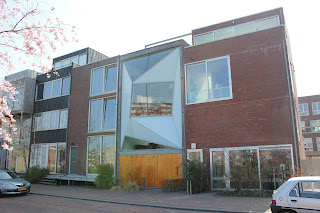We started in the Kop van Zuid area, an area recently transformed from a derelict warehouse district to a lively work/living center in the city. It houses the headquarters of the Rotterdam port authority, a theater, luxury living as well as some social housing and restaurants. In the pictures below you can see how this area now looks, as well as the plans for the completely finished area.
After Kop van Zuid, we went on to explore Katendrecht. This area, which was up to recently a no-go zone with many abandoned warehouses and almost exclusively working class inhabitants, has over the last decade transformed into a much more upscale area, with new shops, new squares and especially a new type of inhabitant popping up on the streets. Pictures of this, in which this development is clearly visible, can be found underneath.
Continuing from Katendrecht, we went to the area Bospolder-Tussendijken. There we found that a whole neighborhood was being rebuild, and the only thing that was left at the river bank was a small cafe, still standing in the middle of all the newly constructed buildings.
The rest of the district was completely revitalized. All new buildings, and along with it new inhabitants, dominate the area and therewith almost drive the old inhabitants out.
An article by Snel et al. (2011) discusses these pressures and forces, using both definitions by Grier & Grier (1978) as well as additions to it (on exclusionary displacement and displacement pressure) by Marcuse (1986). If you want to find more of this, feel free to read his article:
The struggle to belong. Dealing with diversity in 21st century urban settings. Snel et. al (2011)






















